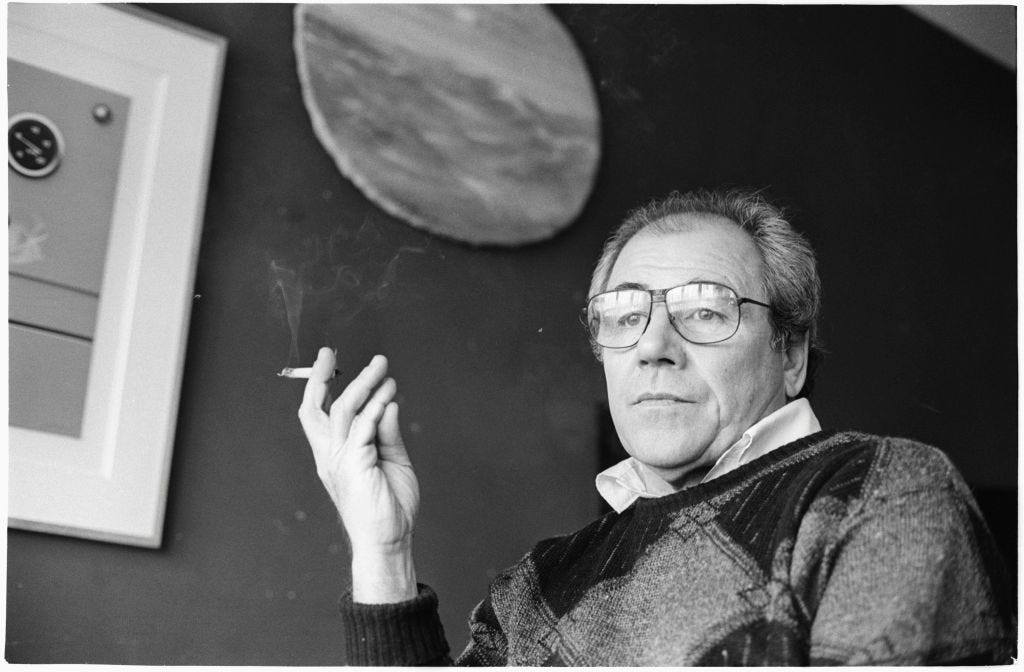Hyperreality: Are We Living in a Media Simulation? Jean Baudrillard
Have you ever scrolled through a social media feed, watched a reality TV show, or visited a meticulously crafted theme park and felt a strange sense of disconnection? A feeling, perhaps, that the world presented through these mediated experiences feels more vibrant, more engaging, or maybe even more real than the often messy and mundane reality outside? This unsettling sensation lies at the heart of the provocative ideas of French philosopher Jean Baudrillard, particularly his concept of hyperreality.
Simulacra: The Copies That Replace Reality
To understand hyperreality, we must first grasp Baudrillard's idea of simulacra. A simulacrum is essentially a copy, a sign, or a representation. Baudrillard argued that in postmodern society, these simulacra have undergone a worrying evolution, detaching themselves progressively from any grounding in an original reality. He outlined four stages of the image or sign:
1. Reflection of a basic reality: The sign is a faithful copy, like a map accurately representing a territory.
2. Masking and perverting a basic reality: The sign begins to distort reality, hinting at something real but misrepresenting it, like a slightly inaccurate map.
3. Masking the absence of a basic reality: The sign pretends to be a copy of something real, but the original no longer exists or never existed. Think of Disneyland's Main Street, U.S.A., representing an idealized small town that perhaps never truly was.
4. Bearing no relation to any reality whatever: The sign is its own pure simulacrum. It doesn't copy, distort, or even mask an absence; it creates a reality of its own – a hyperreality.
Simulation is no longer that of a territory, a referential being or a substance. It is the generation by models of a real without origin or reality: a hyperreal.
The Rise of Hyperreality
Hyperreality is the condition that arises from this final stage. It's a state where the distinction between the real and the simulation implodes. More than just blurring the lines, the simulation becomes the dominant force, often seeming more compelling, more attractive, and ultimately preferred over the original. We inhabit a world saturated with models, simulations, and signs that don't just represent reality but actively constitute it. The hyperreal is often cleaner, more predictable, and more stimulating than authentic experience.
Precession of Simulacra: The Map Before the Territory
Crucially, Baudrillard introduced the concept of the precession of simulacra. This means the simulation no longer comes after the real thing as a mere copy; instead, the simulation precedes and shapes the real. The map now comes before the territory. Think about how consumer products are designed based on market research simulations, how political campaigns craft images based on polling data and focus groups, or how news coverage might focus on constructing a compelling narrative rather than simply reporting events. Social trends, desires, and even our understanding of the world are increasingly generated by the models and media simulations we are immersed in.
Living in the 'Desert of the Real': Modern Examples
Are we, as Baudrillard might suggest, living in the 'desert of the real' – a landscape where authentic reality has been replaced by layers upon layers of simulation? Consider modern examples:
News Media: Does 24/7 news coverage present reality, or does it construct a hyperreal narrative driven by ratings, political agendas, and the need for constant stimulation?
Social Platforms: Curated profiles, influencer culture, algorithmic feeds – do these reflect genuine lives or create idealized, simulated versions that we compare ourselves against?
Reality TV: Scripted scenarios, manipulated conflicts, and edited timelines present a heightened, often dramatic version of life that bears little resemblance to unmediated experience.
Economic Systems: Financial markets often operate on speculation, algorithms, and abstract models detached from the tangible production of goods and services.
As these simulations proliferate, the lines blur completely. What happens to meaning, authenticity, and truth when the copy becomes indistinguishable from, and even preferable to, the original? For a deeper exploration of how these ideas manifest in our contemporary world, consider exploring further perspectives, such as this video discussion:
.
Navigating the Simulation
Baudrillard offers no easy escape route from the hyperreal. He wasn't necessarily providing a solution but rather a critical diagnosis of our condition. His work doesn't aim to guide us back to a lost, pure reality (which, he might argue, never truly existed in the way we imagine it). Instead, it serves as a powerful lens, urging us to critically analyze the profoundly mediated world we inhabit.
It prompts crucial questions: To what extent are our own lives, beliefs, and desires shaped by simulations? How can we cultivate authenticity in a world saturated with copies? What value should we place on the often messy, imperfect 'real' when the hyperreal offers such seductive alternatives? Recognizing the simulation, even if we cannot fully escape it, is perhaps the first step towards a more conscious engagement with the complex reality we navigate.




Excellent!! Very clear and accurate explanation in my opinion. Everyone should understand this. It’s necessary for better understanding of our world.
This made me think of Adam Curtis’s fascinating documentary Hypernormalisation which explores similar ideas, starting from politicians giving up grappling with complex realities 👇
https://m.youtube.com/watch?v=Gr7T07WfIhM